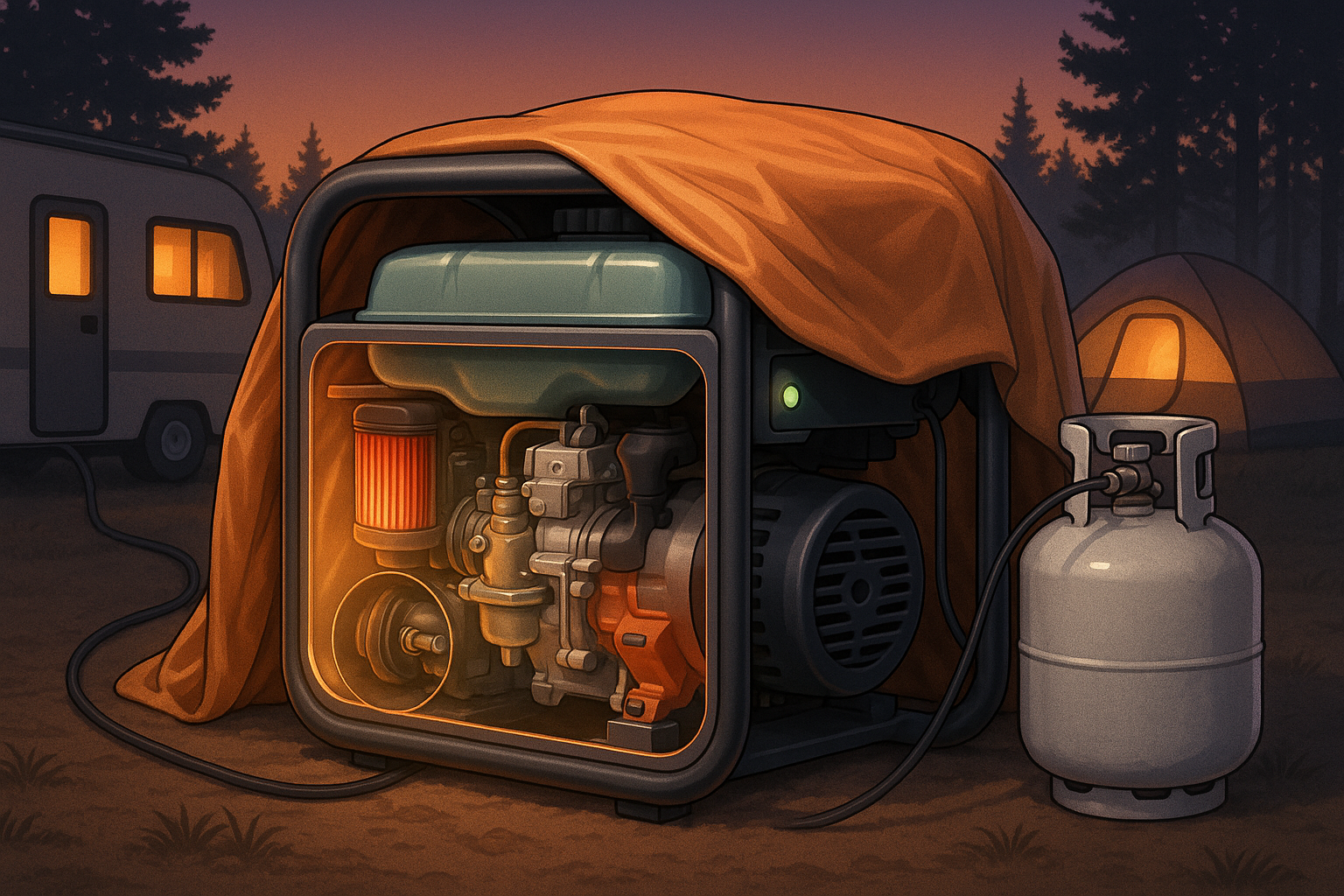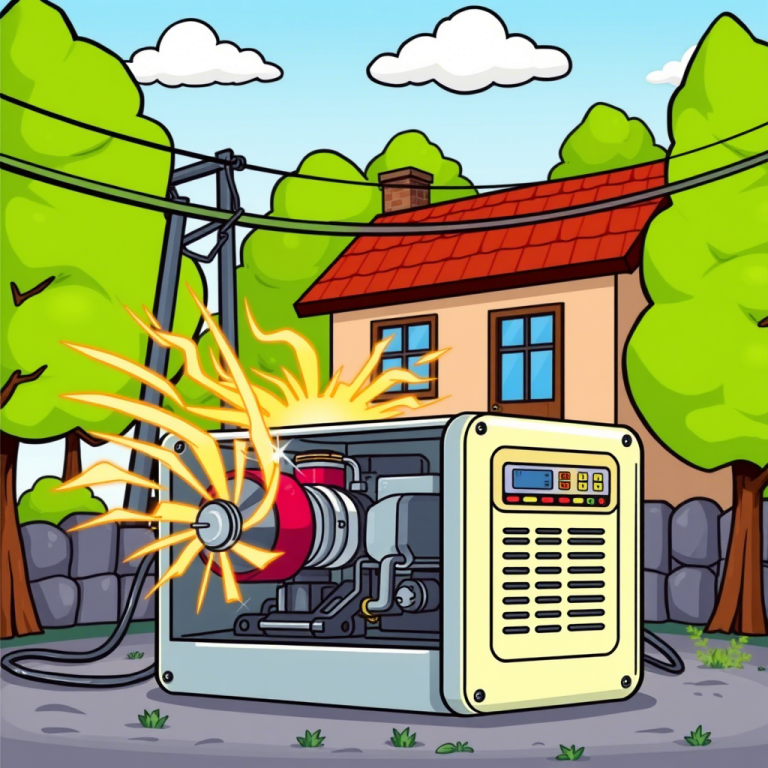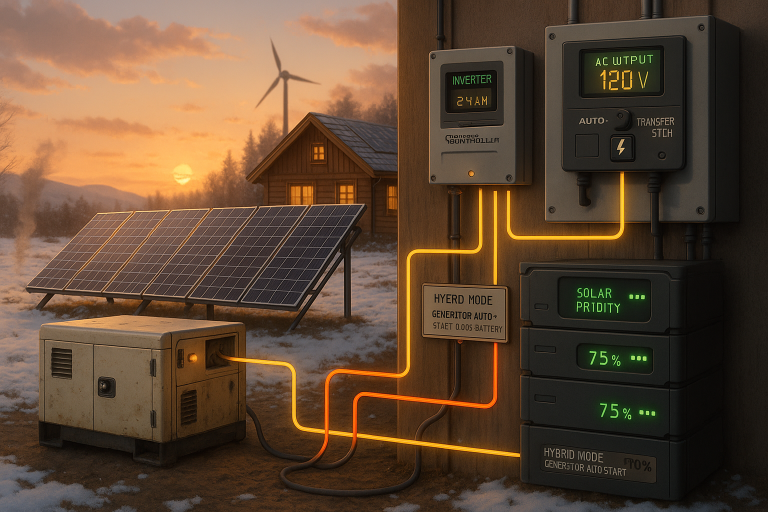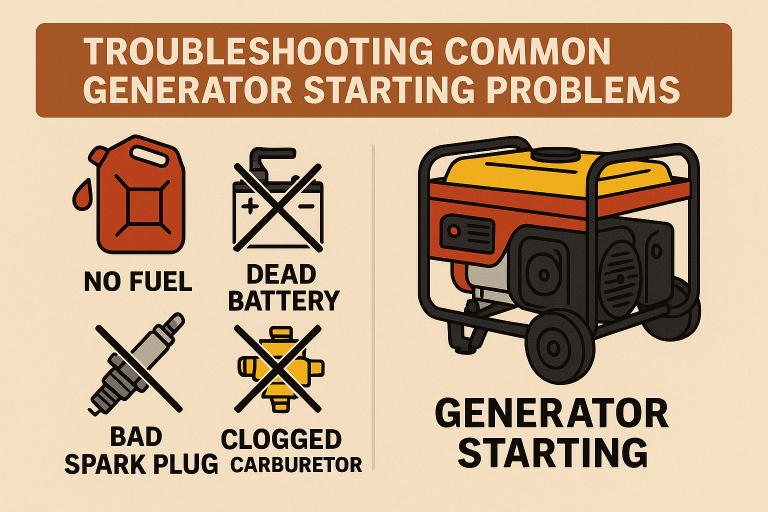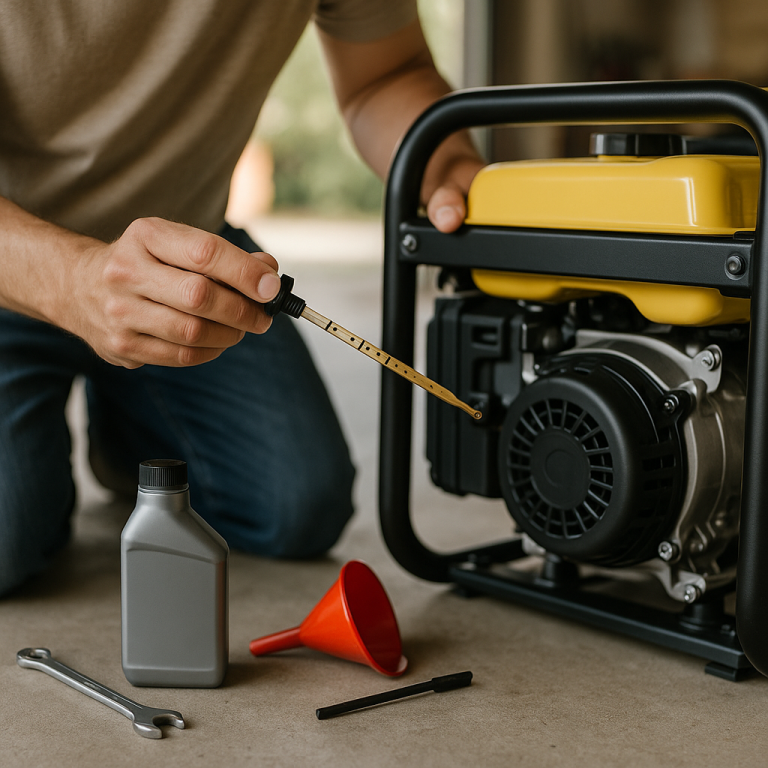How to Increase Fuel Efficiency in Portable Generators
Portable generators are a lifeline during power outages, camping trips, or remote work sites. But let’s face it – fuel costs can add up quickly, especially if your generator isn’t running efficiently. Whether you’re looking to save money, extend runtime, or reduce your carbon footprint, optimizing fuel efficiency is key.
Unfortunately, many generator owners unknowingly waste fuel due to common mistakes like improper sizing, neglecting maintenance, or using suboptimal fuels. This guide will walk you through everything you need to know to maximize your generator’s performance while minimizing fuel consumption.
We’ll cover:
- How to select the right generator for your needs
- Essential maintenance tips for peak efficiency
- Smart operation strategies to conserve fuel
- Fuel optimization techniques and upgrades
- Real-world tests and troubleshooting advice
Let’s dive in and unlock the secrets to getting the most out of your portable generator!
1. Selecting the Right Generator
A. Perfectly Size Your Generator
Choosing the correct generator size is the first step toward fuel efficiency. Here’s how:
- Calculate Starting vs. Running Watts: Appliances often require more power to start than they do to run. For example, a refrigerator might need 2,000 watts to start but only 700 watts to operate continuously. Always account for these surge demands when sizing your generator.
- Follow the 50-80% Load Rule: Generators run most efficiently when operating between 50% and 80% of their rated capacity. Running below this range wastes fuel, while exceeding it risks overloading the engine.
- Avoid Oversizing and Undersizing: An oversized generator burns more fuel without delivering proportional benefits, while an undersized unit may struggle to meet demand, leading to inefficiency and potential damage.
B. Choose the Most Efficient Type
Not all generators are created equal. Consider these options:
- Inverter Generators vs. Conventional: Inverter generators are quieter, lighter, and significantly more fuel-efficient because they adjust engine speed based on load. They’re ideal for sensitive electronics and long-term use.
- Dual-Fuel & Tri-Fuel Options: Dual-fuel generators (gasoline + propane) offer flexibility. Propane burns cleaner and has a longer shelf life, making it cost-effective for extended storage. Diesel generators excel in heavy-duty applications but come with higher upfront costs.
- Battery-Assisted Hybrids: Combining solar panels with portable power stations (like EcoFlow Delta or Jackery Explorer) reduces reliance on fossil fuels entirely. These systems are perfect for eco-conscious users who prioritize sustainability.
2. Essential Maintenance for Peak Efficiency
A well-maintained generator runs smoother, lasts longer, and uses less fuel. Here’s what to focus on:
A. Engine Care Checklist
- Oil Changes: Use the manufacturer-recommended oil viscosity grade and change it every 50 -100 hours of use. Clean oil reduces friction and improves fuel economy.
- Air Filter Maintenance: A clogged air filter forces the engine to work harder, increasing fuel consumption. Clean reusable filters regularly or replace disposable ones as needed.
- Spark Plugs: Worn spark plugs cause misfires and poor combustion. Check them periodically, clean deposits, and ensure proper gapping.
B. Fuel System Tune-Up
- Carburetor Cleaning: Over time, varnish builds up in the carburetor, affecting fuel flow. Use a carburetor cleaner spray or disassemble and clean it thoroughly.
- Fuel Stabilizers: Additives like STA-BIL prevent fuel degradation during storage, ensuring smooth startups and efficient combustion. Tests show stabilizers can improve fuel mileage by up to 10%.
- Leak Detection: Inspect hoses and connections for leaks. Even small drips waste fuel and pose safety hazards.
C. Cooling & Exhaust
- Debris Removal: Dust and debris clogging cooling fins lead to overheating, which lowers efficiency. Regularly brush or blow out the cooling system.
- Exhaust Carbon Buildup: Carbon deposits restrict airflow and reduce performance. Scrub the exhaust port with a wire brush or specialized cleaner.
3. Smart Operation Strategies
Efficient operation goes beyond just flipping the switch. Follow these tips:
A. Load Management
- Appliance Staggering: Avoid turning on multiple high-wattage devices simultaneously. Instead, stagger usage to minimize surge loads.
- Priority Circuits: Identify critical appliances (e.g., fridge, lights) and prioritize them during prolonged outages. Non-essential items can wait.
B. Eco Mode & Throttle Control
- Modern inverter generators feature “Eco Mode,” which adjusts engine speed to match the load. This can cut fuel consumption by 20–40%.
- Disable Eco Mode only when powering highly sensitive electronics that require consistent voltage.
C. Environmental Adjustments
- Cold Weather Kits: Cold temperatures thicken oil and slow engine performance. Install block heaters or oil warmers for better cold-start efficiency.
- High Altitude Jetting: At higher elevations, thinner air requires carburetor adjustments to maintain proper fuel-air ratios. Consult your manual for specifics.
4. Fuel Optimization Techniques
A. Fuel Type Comparisons
- Ethanol-Free Gas: Ethanol attracts moisture, which can harm engines over time. Opt for ethanol-free gas whenever possible – it burns cleaner and extends engine life.
- Propane Advantages: Propane produces fewer emissions, stores indefinitely, and is cheaper per BTU compared to gasoline.
- Diesel Tips: Use winter-grade diesel in cold climates and consider anti-gel additives to prevent fuel thickening.
B. Additives That Work
- Top 3 Fuel Cleaners: Products like Sea Foam, Lucas Oil Fuel Treatment, and BG 44K remove deposits and improve combustion efficiency.
- Octane Boosters: Higher octane fuels aren’t always necessary unless your generator explicitly requires them. Save money by sticking to standard grades unless advised otherwise.
C. Storage Practices
- Winterizing Steps: Drain old fuel, apply fogging oil to internal components, and store the generator in a dry location.
- Summer Prep: Combat humidity by adding desiccant packs inside the storage area to absorb moisture.
5. Upgrades That Improve Efficiency
A. Worthwhile Modifications
- High-Flow Air Filters: K&N filters allow more airflow, improving combustion efficiency. Foam filters are budget-friendly alternatives.
- Low-Resistance Exhausts: Aftermarket exhaust systems reduce backpressure, freeing up horsepower and lowering fuel consumption.
B. Monitoring Tech
- Bluetooth Fuel Sensors: Devices like AmpFlow monitor real-time fuel levels and consumption rates, helping you track efficiency.
- Kill-a-Watt Meters: Measure appliance energy draw to optimize load management.
C. Safety First
- Be cautious about modifying your generator—some changes void warranties or increase carbon monoxide risks. Always follow manufacturer guidelines.
6. Real-World Efficiency Tests
A. Fuel Consumption Benchmarks
- Gasoline vs. Propane: On average, propane-powered generators consume about 2 – 3 gallons per hour at full load, compared to 1- 2 gallons per hour for gasoline models. However, propane’s longer shelf life offsets this difference.
- Eco Mode On/Off: Tests show Eco Mode reduces fuel usage by up to 40%, depending on the load.
B. Case Studies
- RV Boondocking: Combining a 2,000W inverter generator with solar panels extended runtime by 50%, reducing generator runtime from 6 hours daily to just 2 hours.
- Storm Outage: During a 72-hour outage, a homeowner used a dual-fuel generator running on propane, consuming 9 gallons total versus 14 gallons had they used gasoline alone.
7. Troubleshooting Fuel Waste
A. Symptoms of Inefficiency
- Black Smoke: Indicates a rich fuel mixture. Clean the carburetor and check for air intake blockages.
- Hard Starting: Perform compression checks and inspect valves for wear.
B. DIY vs. Pro Repairs
- Rebuild carburetors yourself with kits or hire a pro for complex repairs. Valve adjustments typically require professional tools and expertise.
8. Long-Term Storage & Preservation
- Step-by-Step Winterization: Drain old fuel, fog the engine, and disconnect the battery.
- Battery Maintenance: Charge lithium-ion batteries every 3 – 6 months; trickle-charge lead-acid batteries monthly.
- Rust Prevention: Coat steel tanks with rust inhibitors or store in climate-controlled environments.
Conclusion
Maximizing fuel efficiency in portable generators saves money, extends runtime, and reduces environmental impact. To summarize:
- Size your generator correctly and choose an efficient model.
- Maintain the engine, fuel system, and cooling components regularly.
- Operate smartly with load management and Eco Mode.
- Optimize fuel choices and storage practices.
- Upgrade wisely and invest in monitoring tech.
Remember: “An hour of tuning saves 10 gallons a year.” Start implementing these strategies today, and watch your savings grow!
FAQs & Quick Tips
Q: Can I convert my gas generator to propane?
A: Yes, conversion kits are available that allow you to switch your gasoline-powered generator to run on propane instead. Propane offers several advantages, including cleaner combustion, longer shelf life, and reduced carbon buildup in the engine. However, these conversions involve modifying the carburetor or fuel delivery system, which can be complex for those without mechanical experience.
- Why Consider Propane?
- Cleaner Burn: Produces fewer emissions, making it better for the environment.
- Storage Benefits: Unlike gasoline, propane doesn’t degrade over time, so it’s ideal for emergency preparedness.
- Cost Savings: Propane is often cheaper per BTU compared to gasoline.
- What’s Involved in a Conversion?
A typical conversion kit includes a new carburetor adapter, fuel lines, regulators, and mounting hardware. You’ll need to disassemble part of the generator to install these components properly. - Professional Installation Recommendation:
While DIY enthusiasts may attempt the conversion themselves, professional installation ensures everything is set up correctly and safely. Improper modifications could lead to poor performance, safety hazards (like leaks), or even voided warranties. If you’re unsure, consult a certified technician who specializes in generator repairs.
Q: Why does my generator use more fuel after 3 years?
A: Over time, wear and tear take their toll on generators, leading to increased fuel consumption. Here are the most likely culprits—and how to address them:
- Wear and Tear:
As parts like gaskets, seals, and piston rings degrade, they can cause air leaks or inefficient compression. This forces the engine to burn more fuel to compensate. Regularly inspect these components and replace them as needed. - Dirty Filters:
A clogged air filter restricts airflow, causing the engine to run rich (using more fuel than necessary). Similarly, a dirty fuel filter impedes fuel flow, forcing the engine to work harder. Clean or replace both filters regularly to maintain optimal performance. - Degraded Fuel:
Old or stale gasoline breaks down over time, especially if ethanol-blended fuels are used. Ethanol attracts moisture, which can corrode internal components and reduce efficiency. Always use fresh fuel and consider adding a stabilizer during storage to prevent degradation. - Carbon Buildup:
Over three years, carbon deposits accumulate in the combustion chamber and exhaust system. These deposits hinder airflow and reduce engine efficiency. Periodically clean the carburetor, spark plugs, and exhaust ports to restore performance. - Ignition System Issues:
Worn spark plugs or faulty ignition coils can result in incomplete combustion, wasting fuel. Inspect and replace spark plugs according to the manufacturer’s recommendations.
Solution: Perform a thorough maintenance check every season—or at least once a year—to identify and resolve these issues before they escalate.
Quick Hack: Use a Space Blanket to Shield the Generator from Wind Chill
Cold weather significantly impacts generator efficiency by thickening oil and slowing engine performance. One simple yet effective hack is to use a space blanket (also known as an emergency thermal blanket) to shield your generator from wind chill.
- How It Works:
Space blankets reflect radiant heat and provide insulation, creating a warmer microclimate around the generator. This helps keep the engine block and oil at a higher temperature, reducing strain during startup and improving overall efficiency. - Steps to Implement:
- Position the generator in a sheltered area away from direct wind exposure.
- Drape the space blanket loosely over the generator, leaving enough room for proper ventilation. Avoid covering the exhaust or air intake vents to prevent overheating or carbon monoxide buildup.
- Secure the edges with bungee cords or weights to keep the blanket in place.
- Additional Cold Weather Tips:
- Use a cold weather kit, such as a block heater or oil warmer, for extreme temperatures.
- Switch to low-viscosity synthetic oil designed for cold climates.
- Store fuel indoors to prevent it from thickening due to freezing temperatures.
By incorporating this quick hack into your routine, you can improve cold-weather efficiency and reduce fuel consumption during winter months.

